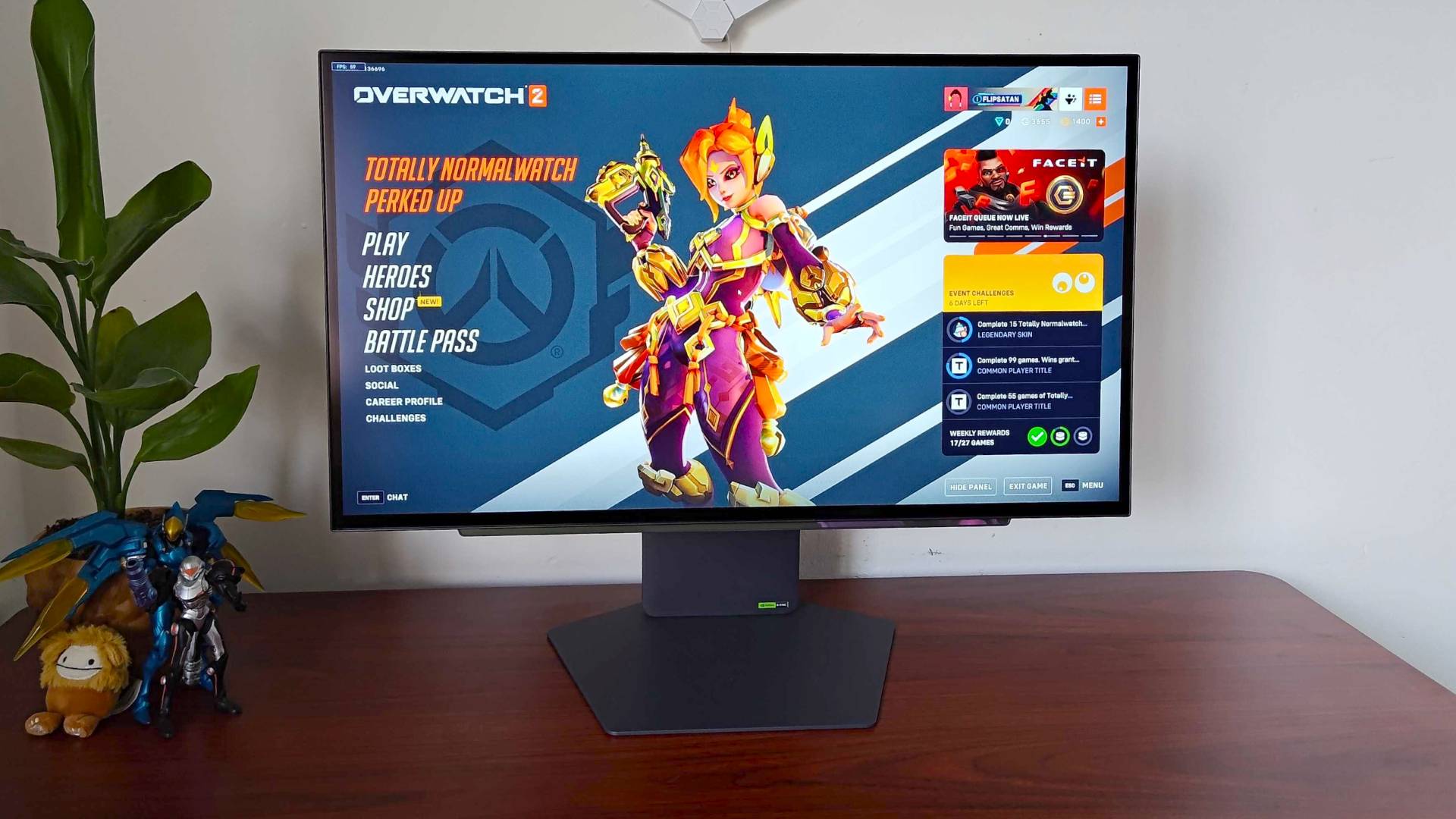GamesRadar+ Verdict
Serving as one of the fastest 1440p gaming monitors in 2025, the LG UltraGear 27GX790A-B boasts a slick 480Hz refresh rate and a vibrant 27-inch OLED panel. Its specs are going to benefit premium competitive players more than anyone else, and the screen cuts back on some features to make that mission a priority. As a result, it’s a bit cheaper than some of its rivals, which means it’s more likely to fit within your budget.
Pros
- +
Fast 480Hz QHD panel
- +
Great WOLED vibrancy
- +
Top-tier motion clarity
- +
Attractive design
Cons
- -
No dual resolution mode this time
- -
Less bright than rivals
- -
Scaled back features
Why you can trust GamesRadar+
As a middle child, I live in the shadow of my sisters, and I feared the LG UltraGear 27GX790A-B would suffer the same fate. Not only does it have a 32-inch 4K dual resolution monster as a sibling, but it also has to fight with other 1440p 480Hz contenders for attention. Thankfully, the 27-inch OLED screen does enough to justify not locking it in the attic and placing it on a diet of fish heads, and while it’s got some brutish QHD cousins out there to contend with, it manages to hold its own.
Since the LG UltraGear 27GX790A-B sits at the top end of the best gaming monitor spectrum, it wears a premium $999.99 price tag. Yes, that is expensive for a 1440p display, but not unreasonable since we’re talking about a WOLED panel that drives things to 480Hz. Plus, it undercuts its main rival, the $1,099.99 / £1,199 Sony Inzone M10S, while providing a pretty similar approach to punchy competitive visuals.
The 27GX790A-B shares the same DNA as my current favorite screen, the LG UltraGear 32GS95UE-B, but it does stick to a specific niche. I can certainly see why players would want to stick solely to 1440p to hit 480Hz rather than using a 1080p dual resolution mode, but pricing does leave me wondering if those of you who are really serious about esports-grade specs would choose this panel over faster alternatives.
Price | $999.99 / £899.99 |
Panel type | OLED |
Screen size | 27-inch |
Aspect ratio | 16:9 |
Resolution | 2560 x 1440 |
Refresh rate | 480Hz |
Brightness | 1,000 nits |
Viewing angles | 178°/178° |
Contrast ratio | 1500000 : 1 |
Ports | 1 x HDMI 2.1, 2 x DisplayPort 1.4, 2 x USB ports |
Design
At a glance, you can tell the UltraGear 27GX790A-B grew up alongside the 32GS95UE-B. Both monitors wear a hexagon pedestal stand and a similar bezel, but LG has snuck a few changes in there. For starters, the 27-inch screen’s base is metal, which helps it feel more premium than its $1,399.99 sibling. More importantly, it’s thinner, which helps give it the same low-profile vibe as the Inzone M10S. At least, it’s similar when it comes to sliding soundbars and other desktop bits over it since it doesn’t match Sony’s slick 360° pivoting mechanism.
That’s not to say the 27GX790A-B doesn’t pivot; it will swing from side to side and rotate. It’s also height adjustable, so you can position things to your liking. It’s just that LG hasn’t stepped up its stand with this 27-inch model, and while I do appreciate a “not broke, don’t fix it” approach, it does help the Inzone M10S stand out a little more.
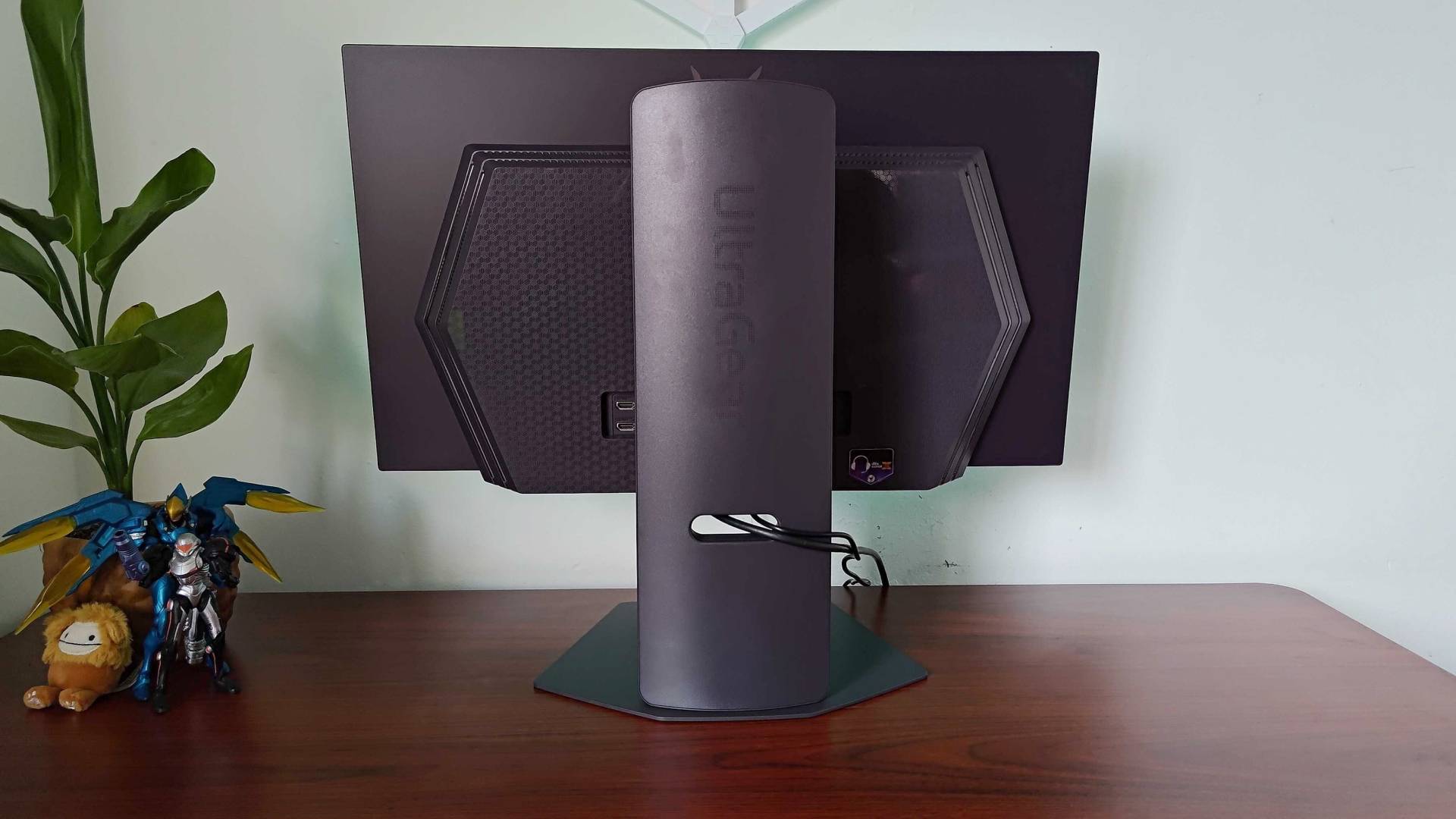
Since we’re talking about a smaller 27-inch panel with fewer extras within, LG has switched up the back of the 27GX790A-B. Rather than using a curved enclosure, the model instead makes use of a hexagon hump that’s accented by RGB lighting strips. That same area features the monitor’s IO, which just so happens to be facing outwards rather than under a lip this time around. That’s my preferred approach since I find it easier to manage cables and plug things in from the front.
Just like most other monitor makers, LG has an aversion to buttons. The result is naturally one of those joystick nubs that every screen uses for OSD controls, and if you’re a first-time reader, let it be known I don’t get on with those. The 27GX790A-B does ease the pain by placing it under the bottom lip rather than flat to the back, and it’s easier to rock thanks to its larger size. But, I now simply crave other control methods since some screens include a remote, and it’s always going to be something I’ll shout about.
Features

The 27GX790A-B has a pretty specific mission – deliver snappy 1440p 480Hz visuals with minimal distractions. That apparently includes not letting other features get in the way of that quest, as this specific panel is armed with fewer extras than its counterparts. Notably, you’re not getting dual resolution capabilities here, which makes technical sense since it’s a QHD display that can’t tap into the same 1080p to 4K perfect scaling techniques.
The issue here is that it’s not just the more expensive 32-inch UltraGear that can pull off dual resolution mode – the 27-inch LG 27G850A-B can do it too, albeit using an IPS display. That means the 27GX790A-B is really geared towards players who specifically need an OLED 1440p panel while being able to hit 480Hz, but depending on your PC build, you might need to fall back to 1080p to do that in most shooters. For the record, I was able to pull it off in Overwatch 2 using the new Nvidia GeForce RTX 5060 Ti and low settings, so that gives you an idea of the oomph you’ll actually need.
All that begs the question: are 1440p 480Hz monitors a niche? They certainly feel like a better fit for high-end rigs that can easily boost fps to match higher refresh rates. However, their very nature contradicts conventions within the competitive space that tie into using 1080p screens to maximise performance. I do think we’re at the stage where everyday PC players are jumping from full HD to QHD, but it’s worth asking yourself if you’ll benefit more from hitting a straight down the middle resolution rather than being able to switch from 1080p to 4K depending on what you’re playing.
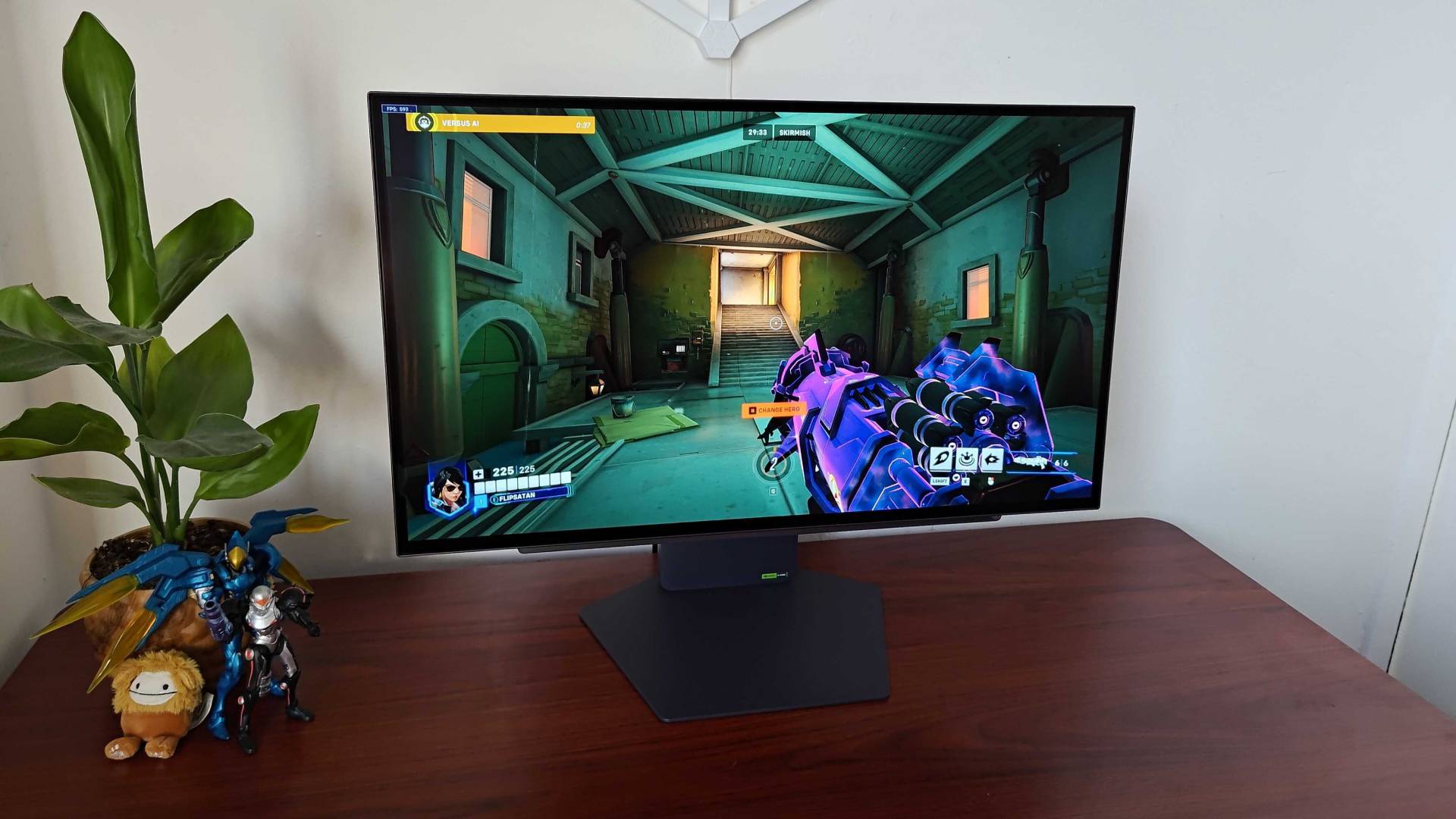
Another feature missing in the 27GX790A-B is speakers. It’s not entirely surprising, given it’s targeting competitive players who’ll use a headset anyway, but this does factor into the higher price of LG’s QHD panel. You are still getting a USB hub, though not one with Power Delivery for your Steam Deck or alternative gaming handheld. The overall package places emphasis on the price tag being directly linked to the 1440p 480Hz OLED panel above any other extras or perks, and that might have you questioning where you want to put your money.
On the OLED side of things, the 27GX790A-B taps into LG’s usual array of protective features. ScreenMove, Saver, and Image Cleaning all help mitigate the long-term effects associated with the screen type, like image retention and the dreaded burn-in. The software suite isn’t quite as intricate as what’s included with the Dough Spectrum Black 32, a monitor that happens to use an LG WOLED panel under its hood. Regardless, it’ll certainly keep the display healthy in the long term, even if the passage of time is cruel to these particular panels.
Performance

Throughout my UltraGear LG 27G850A-B road tests, I was focused on seeing whether the 1440p panel could provide a competitive edge while still looking the part during slower-paced adventures. This is a screen that’s going to suit high-end PC players who don’t want to ever dial back on resolution, instead sticking with 1440p to boost frame rates beyond comfortable. If you find yourself playing with QHD presets enabled as a necessity, this perhaps isn’t the screen for you, but it is out to impress if you can spare the system performance.
Let’s kick off with my experience playing Overwatch 2 using the 27G850A-B, as the hero shooter really helped the OLED screen shine. Blizzard’s FPS frolic boasts one of the highest maximum frame rates out there since it will happily run at 600fps, and most high-end GPUs should be able to at least match LG’s 480Hz refresh rate of choice. The panel’s 0.03ms GtG response time and excellent motion clarity mean that zipping around maps will both feel slick and still benefit your personal performance levels on the visual side of things, and that makes all the difference when trying to spot pesky hitscan characters from the air as Pharah.
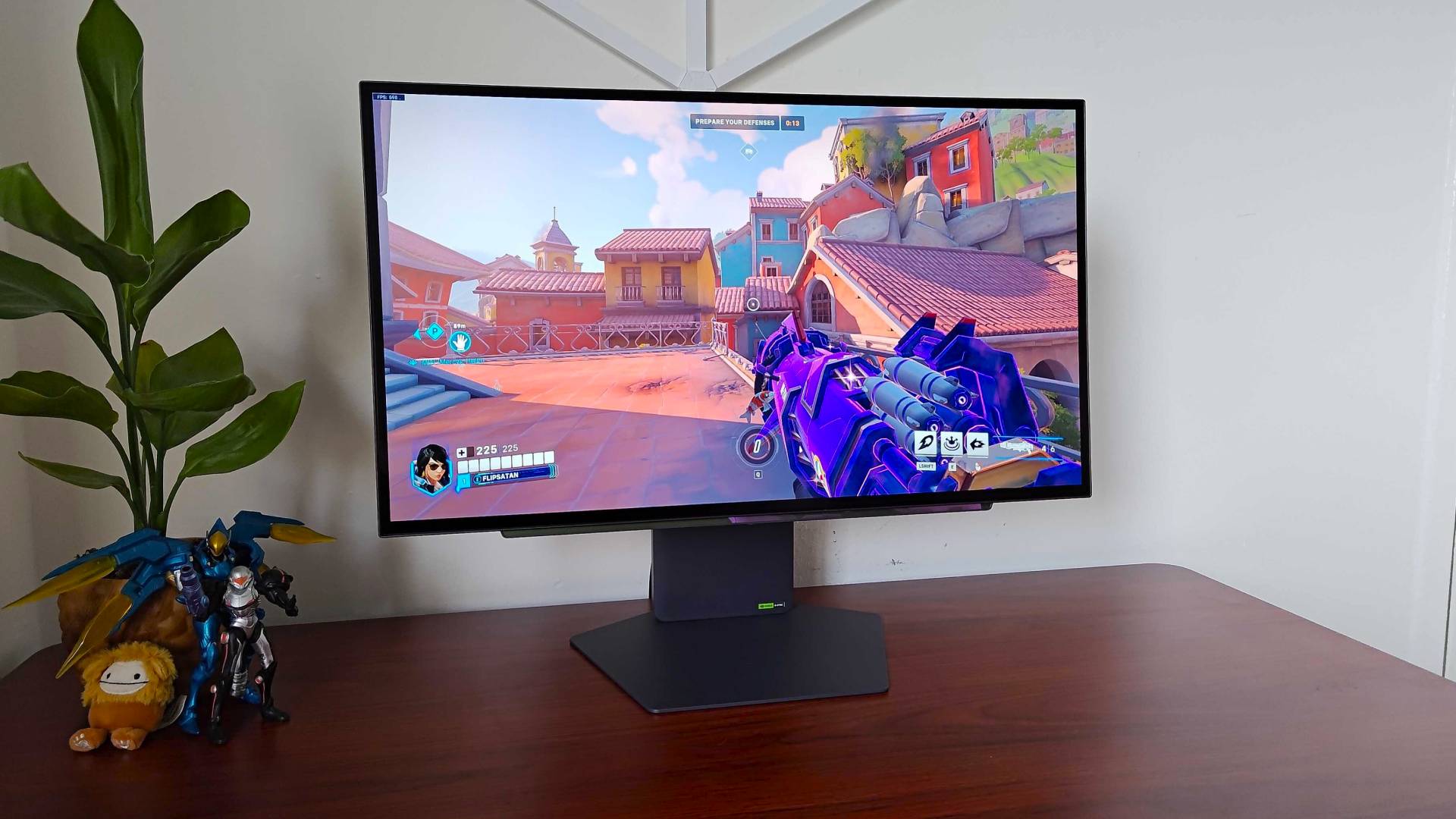
Playing at 1440p does naturally help with clarity too, but I do think 1080p holds up pretty fine on 27-inch screens. Therefore, I’m hesitant to say that the jump to QHD is a game-changer even if it does mean less pixelated edges and a boost to in-game sightseeing. I’d argue that making use of an OLED panel benefits the latter more since you’re getting those inky blacks and vivid colors that make colorful and darker maps pop.
I also like to dabble with Marvel Rivals when testing monitors, but the third-person comic book caper doesn’t really make full use of a 480Hz panel. More often than not, I find that the screen can’t steadily maintain that high a frame rate across all maps, no matter what panel you’re using, but playing at 1440p does mean you’ll hit those higher numbers easier. You’re in for a visual treat regardless, and the hero romp could become more optimized for competitive play in the future.
When it comes to brightness and HDR abilities, I always like to take a little trip to Night City. I specifically like to check how the glare of Cyberpunk 2077’s neon street lights is replicated and how it handles those shadowy corners of the metropolis comparatively. The display’s 600 nits capabilities with High Dynamic Range enabled help it pull off some excellent results that can keep up with other WOLED models, but it’s certainly not the brightest display out there. I found that SDR levels struggled at times to completely cut through my daylight-flooded office, and reflections were a bit of an issue thanks to my left-hand window.
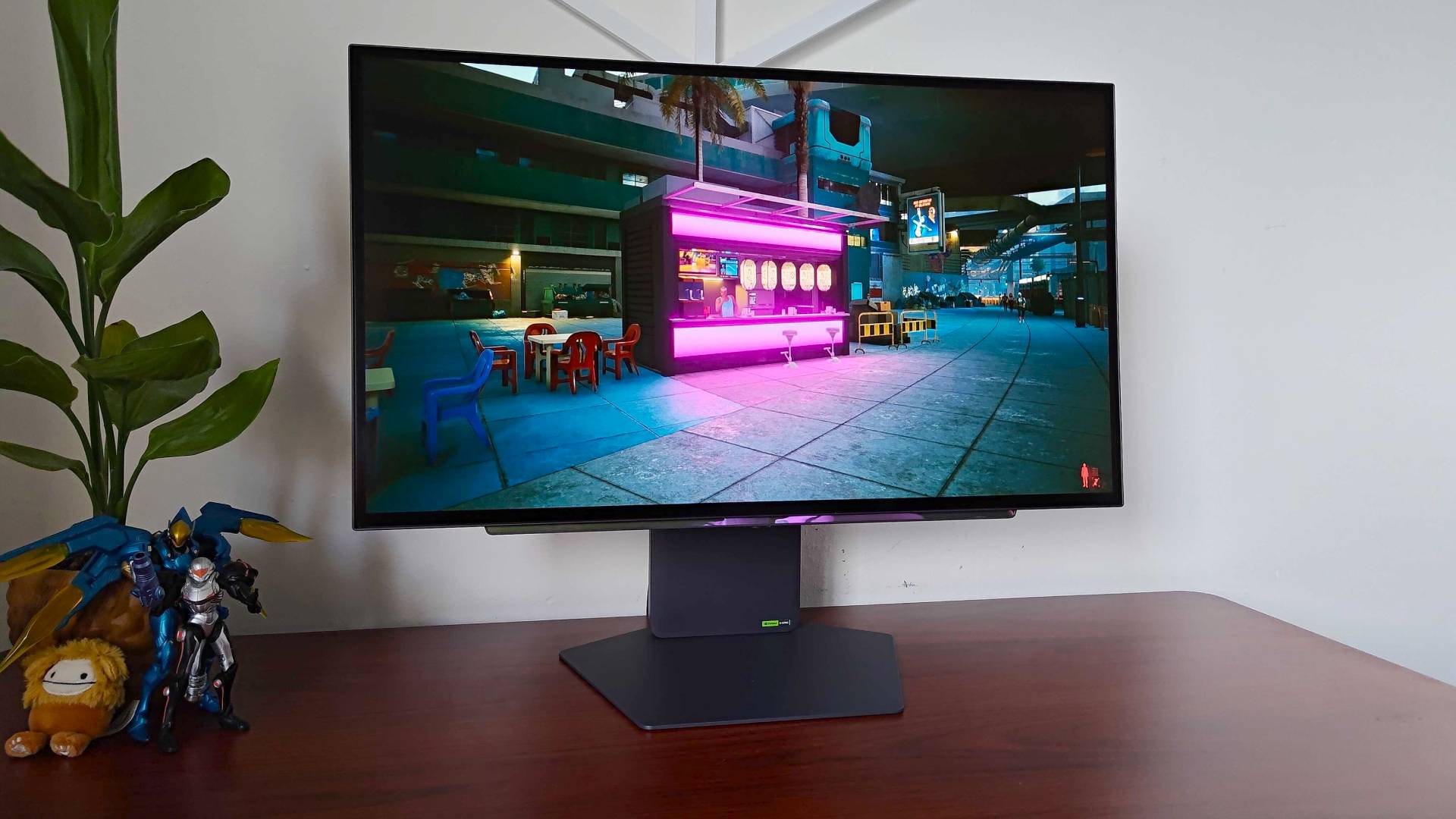
I’m still on a DOOM replay ahead of the Dark Ages, so I’ve been using the opening stages in my monitor tests. The aggressive reds of Mars come across ridiculously well on LG’s OLED screen, and 1440p at 27 inches is always going to look pretty nice even when up against 4K alternatives. That said, I can see why someone would want to invest in the QD-OLED Alienware AW2725Q since its lofty 166ppi does provide strikingly sharp results without much Quantum Dot compromise.
Make no mistake, the UltraGear 27G850A-B packs punchy performance that gives it a seat at the 1440p 480Hz table. It’s worth remembering that this is really the QHD bar right now, so you’re paying a premium for the fattest possible refresh rate at this resolution. The display does a grand job of reliably hitting those notes in competitive scenarios while still providing lavish OLED visuals across all genres, but you’ll absolutely want to make sure your rig has the guts to handle QHD across all your games.
Should you buy the LG UltraGear 27G850A-B?
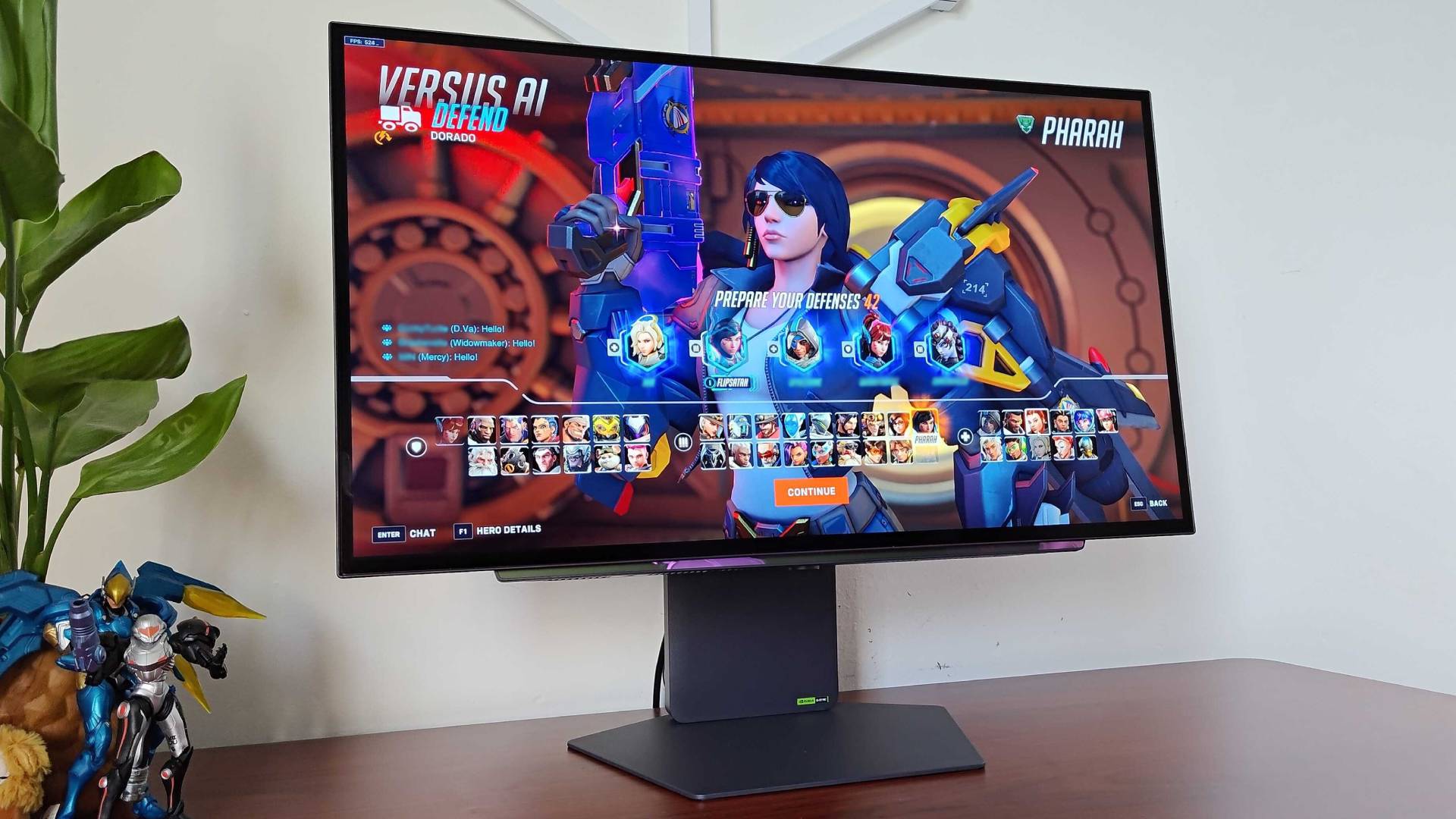
The UltraGear 27G850A-B is one of the slickest 1440p gaming monitors on the market right now, and has the OLED chops to both provide gorgeously vibrant visuals and hit competitive speeds. However, not every player is going to benefit from having 480Hz at their disposal, and LG’s dual resolution models could actually serve players with better versatility.
At the same time, there will absolutely be competitive players out there who want the fastest 1440p screen possible. I want to stress that even if you do play at QHD resolutions, you’ll need a beefy PC build to actually hit frame rates that tie in with 480Hz. That narrows the pool of potential buyers down quite a bit, but that’s exactly the same position the Sony Inzone M10S is in.
TLDR? Pick up the LG UltraGear 27G850A-B if you want a super speedy 1440p monitor for under $1,000. Otherwise, you’ll want to explore 4K dual resolution options or a cheaper QHD panel with dialled-back specs.
How I tested the LG UltraGear 27G850A-B
For two weeks, I used the LG UltraGear 27G850A-B as part of my main gaming PC setup for everything from general work tasks to benchmarking. During that time, I used specific games to test the monitor's visual capabilities, like Cyberpunk 2077, Overwatch 2, DOOM, and Marvel Rivals. I also used specific scenarios to test brightness, HDR, and responsiveness to compare them to other models within the same specs and price range.
For more information on how we test gaming monitors, swing by our full GamesRadar+ Hardware Policy.

I’ve been messing around with PCs, video game consoles, and tech since before I could speak. Don’t get me wrong, I kickstarted my relationship with technology by jamming a Hot Wheels double-decker bus into my parent’s VCR, but we all have to start somewhere. I even somehow managed to become a walking, talking buyer’s guide at my teenage supermarket job, which helped me accept my career fate. So, rather than try to realise my musician dreams, or see out my University degree, I started running my own retro pop culture site and writing about video games and tech for the likes of TechRadar, The Daily Star, and the BBC before eventually ending up with a job covering graphics card shenanigans at PCGamesN. Now, I’m your friendly neighbourhood Hardware Editor at GamesRadar, and it’s my job to make sure you can kick butt in all your favourite games using the best gaming hardware, whether you’re a sucker for handhelds like the Steam Deck and Nintendo Switch or a hardcore gaming PC enthusiast.
You must confirm your public display name before commenting
Please logout and then login again, you will then be prompted to enter your display name.
